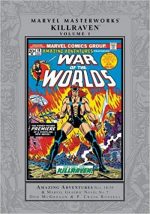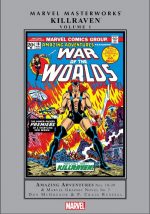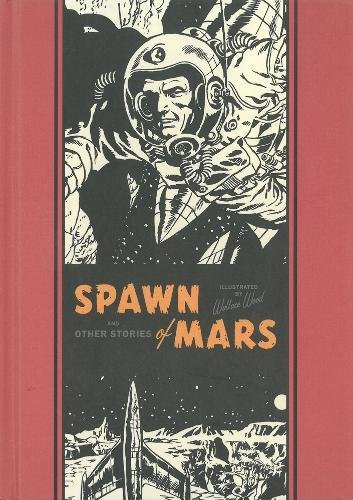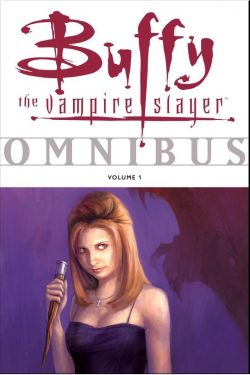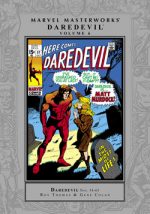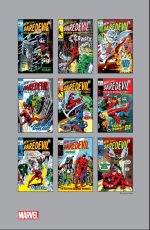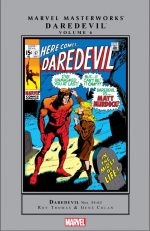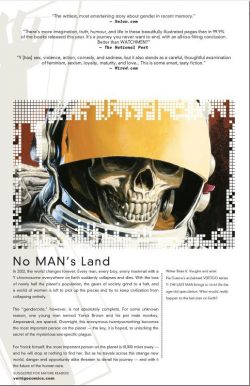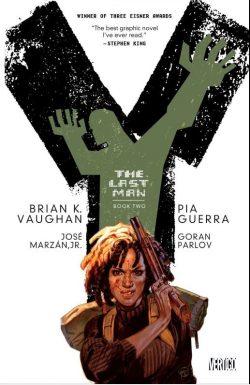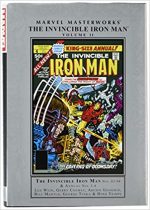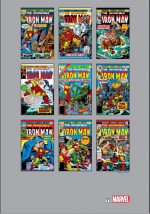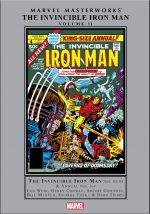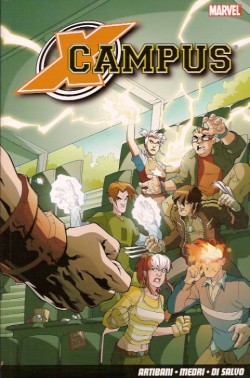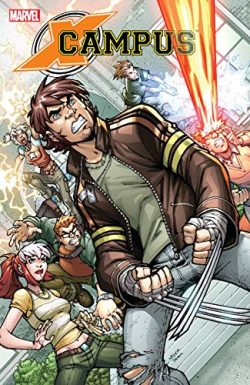
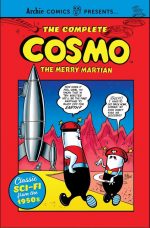

By Sy Reit, Bob White & Terry Szenics, with Tom DeFalco, Dan Parent, Fernando Ruiz, Ian Flynn, Jeff Schultz, Tracy Yardley & various (Archie Comics)
ISBN: 978-1-68255-895-9(TPB)
MLJ were a publisher who promptly jumped on the “mystery-man†bandwagon following the debut of Superman. They began their own small but inspirational pantheon of gaudily clad crusaders in November 1939, starting with Blue Ribbon Comics, and followed up by Top-Notch and Pep Comics. The content was the standard blend of costumed heroes, two-fisted adventure strips, prose pieces and gag panels.
After a few years, Maurice Coyne, Louis Silberkleit and John Goldwater (hence MLJ) spotted a gap in their blossoming market. From December 1941 the masked champions and rugged he-men were gradually but insistently nudged aside by a far less imposing paragon: an “average teen†enjoying ordinary adventures like the readers, but with the laughs, good times, romance and slapstick emphasised.
Pep Comics #22 introduced a gap-toothed, freckle-faced red-headed goof showing off to the pretty blonde next door. Taking his lead from the popular Andy Hardy matinee movies starring Mickey Rooney, Goldwater developed the concept of a young everyman protagonist, tasking writer Vic Bloom & artist Bob Montana with the job of making it work.
The feature was an instant hit and by the winter of 1942 had won its own title. Archie Comics #1 was the company’s first non-anthology magazine and with it began the gradual transformation of the entire company. The slapstick teen travails of Archie Andrews, girl-next-door Betty Cooper, Archie’s unconventional best friend/confidante Jughead Jones and filthy rich, raven-haired Veronica Lodge in scenic small-town utopia Riverdale were the components of the comic book industry’s second Genuine Phenomenon (Superman and superheroes being the first).
By 1946, the kids had taken over, so the company renamed itself Archie Comics, retiring its costumed characters years before the end of the Golden Age and becoming, to all intents and purposes, a publisher of family comedies.
Its success, like the Man of Steel’s, changed the content of every other publisher’s titles, and led to a multi-media industry including TV, movies and a chain of restaurants. In the swinging sixties pop hit Sugar, Sugar (a tune from their first animated television show) became a global smash. Wholesome garage band “The Archies†has been a fixture of the comics ever since. Adapting seamlessly to every trend and fad of youth culture since before there even was such a thing, the host of writers and artists who’ve crafted the stories over the decades have made the “everyteen†characters of utopian Riverdale a benchmark for childhood development and a visual barometer of growing up.
Throughout that meteoric rise, however, the company never left all its eggs in one basket. Its superhero line periodically resurfaces and reboots and their forays into all-ages supernatural thrillers and straightforward adult-themed horror comics are always worth reading. Archie Comics also periodically sought to repeat the success of its original humour breakthrough with titles such as Katy Keene, Wilbur, Super Duck, Pat the Brat, That Wilkin Boy and many others. Each attempt took inspiration from the tone of the times…
In 1958, the world was abuzz with science, science fiction and the accelerating space race, and the time seemed right for an amusing series about a bold but affable explorer from the Red Planet. The result was Cosmo the Merry Martian by Sy Reit, Bob White & Terry Szenics.
Seymour Victory Reit (1918-2001) was an accomplished humourist, children’s author, historian, cartoonist and animator. His many clients and employers included Mad Magazine and his greatest claim to fame now is co-creating – with Joe Oriolo – Casper the Friendly Ghost.
Comics veteran Robert “Bob†White (1928-2005) was an Archie mainstay until the mid-1960s when he was apparently summarily fired for daring to moonlight (on Tower Comics’ Tippy Teen). He had a keen eye for sight gags, a deft line in monster-design and a slick accessible style as seen in this years-ahead-of-its-time gently satirical comedy sci fi series… Often, that term is mere hyperbole, but it’s true here, as Cosmo the Merry Martian was revived in 2014, and has been with us ever since…
Running between September 1958 and October 1959, the series began with ‘Destination Earth!’ as all Mars watches spacer Cosmo and his extremely reluctant co-pilot Orbi blast off on the first flight to another planet. Ship designer Professor Thimk is anxious, and Cosmo’s girlfriend Astra is still trying to finagle her way onto the ship with the astronauts…
Eventually however the ship blasts off, exploiting the close proximity of the worlds to cut travel time. They are only 2000 miles from their destination when a meteor punctures the fuel tanks and forces them to crash land on Luna…
‘Moon Merriment’ then manifests as the explorers are rescued by bizarre, fractious, pun-obsessed but scientifically advanced moon people called Oogs. After much fuss and kerfuffle they ferry Cosmo and Orbi to their intended destination just in time to take in and disastrously disrupt a baseball game. As confusion reigns, the ‘Planet Playmates!’ hastily return to Luna…
When the Martians decide to explore the Dark Side of the Moon in #2 (November 1958), they are drawn into ‘The Great Gillywump Hunt!’: encountering a dread beast with an undeserved reputation and very bad cold. Seeking to placate centuries of misunderstanding in ‘Sneezy Does It!’ our heroes again cadge a lift ‘Down to Earth!’ to secure a cure for that pestilential cold, but the attempt again triggers chaos on the third rock from the Sun…
Meanwhile on Mars, Thimk and Astra board a spare rocket to save Cosmo and Orbi…
The issue then finds time and space for a brace of quick complete tales: one featuring egghead alien jimmy jupiter and his hand-made robot girlfriend whilst the second sees cuboid ET Squarehead pick up a rather unique method of travel…
Cosmo the Merry Martian #3 didn’t launch until April 1959 and found the moon-marooned astronauts ‘Venus Bound!’ after Thimk’s rescue rocket arrives on Luna and delivers orders to explore the second planet. Setting out, the ship carries the quartet of Red Planeteers, a contingent of Oogs, Orbi’s dog Jojo and a subtle stowaway… the bellicose Gillywump…
Arrival on the mysterious misty planet denotes ‘Trouble for Orbi!’ in the form of a sleeping giant, until his comrades rush ‘To the Rescue!’ Eventually, cooperation and communication with the residents offset a ‘A Slap-Happy Ending!’ and the adventure ends with the voyagers rushing to meet the boss…
The interplanetary antics then conclude with mathlete jimmy jupiter finding the upside of a hit-&-run in ‘Lovely Day!’…
June 1959 saw the release of issue #4 and an audience with ‘The Queen of Venus’. The gorgeous monarch sets Astra’s hackles rising and causes ‘Trouble for Cosmo!’ by declaring her intention to marry him…
His fellow explorers soon devise a way to ‘Rescue in Peace!’ culminating in another example of ‘A Slap-Happy Ending!’, but the frantic flight from Venus damages their ship and the appalled escapees find themselves shooting straight for deep space with no way to turn, stop or even decelerate…
The tense cliffhanger is slightly offset by another jimmy jupiter/Squarehead double bill featuring calculus chuckles and cubic cartoon whimsy…
‘Stand by for Saturn!’ opens #5 (August 1959), with the out-of-control Mars ship hurtling towards the planet’s rings. Happily, the collision is not fatal and the voyagers make relatively harmless planetfall before meeting the friendly vegetable inhabitants. All too soon though, the explorers fall foul of ‘The Magic Gumdrops!’ Cosmo’s reluctant co-pilot undergoes shocking transformations in ‘Pardon My Size!’, culminating in ‘A Ride for Orbi!’ to those rings and then astoundingly ‘On to Mars!’, leaving his companions to hitch a lift home with the Saturnians, whilst Squarehead closes the issue with ‘The Mirror the Merrier!’…
The series was abruptly curtailed with the October 1959 release, as ‘Make Mine Mars!’ saw the Red Planet hosting a convocation of visitors from Luna and Saturn only to be imperilled by a potential world-conquering villain as ‘Meet Dr. Beatnik!’ introduces a Martian mad scientist intent on conquering Earth.
His horrified compatriots are determined to thwart his plans, resulting in ‘The Great Space Chase!’ and an outer space confrontation in ‘Fire Away!’ before a multi-world coalition finally accomplishes ‘The End of Dr. Beatnik!’ and opts to land on Earth for a friendly visit…
Fun and thrilling, packed with easily-relatable facts and astronomical data, the saga was a splendid example of family-friendly entertainment, but had failed to find sufficient readership over a year of continuous frolicsome adventure. Although it ended there, the series was fondly remembered and was revived in the space-friendly 21st century.
In Archie #655 (June 2014) Tom DeFalco, Fernando Ruiz & Rich Koslowski reintroduced a more take-charge iteration of the jolly voyager in short story ‘The Good Guys of the Galaxy!’ Here, Archie and Jughead teamed up with past characters such as Captain Sprocket, Cat-Girl, Captain Pumpernik and Super Duck in a multiversal action romp to save creation from the reality-warping threat of the Miracle Mitten…
The Martian then popped up in ‘From Mars with Love’ (Jughead & Archie Double Digest #15, October 2015, by Ruiz & Bob Smith) with a disastrous gift suggestion for Veronica’s birthday and again as a computer game in ‘Cosmo Go!’ (Archie Comics Double Digest #275 February 2017, by Dan Parent & Jim Amash).
The game version reappeared in ‘Ready, Set, Go!’ (Archie Comics Double Digest #285 February 2018 by Parent, Jeff Schultz & Amash), before the Martian finally reclaimed his own comic book series in January 2018. Cosmo #1 was crafted by Sonic the Hedgehog team Ian Flynn, Tracy Yardley & Matt Helms who reinvented the Red Rover as a space cop and leader of a team of cosmic heroes in ‘Space Aces!’
If you’re only interested in the vintage tales, you might want to pick up the cheaper Pep Digital #42 which gathers the Reit & White ’50’s series and also includes a snippet from 2011’s Archie & Friends: Night at the Comic Shop by Alfonso Ruiz, Bill Galvan & Amash.
In the chapter ‘Comic Cosmosis’ the original Cosmo, Orbi and Jojo explosively arrive in Riverdale’s PEP Comics store at the vanguard of a wave of comics characters from alternate realms – and MLJ/Archie’s back catalogue. It’s a great teaser for the introduction of Archie’s own multiverse…
Packed with charm, elucidation and restrained action, the exploits of Cosmo offer a happy view of the Martian way that will delight fun-lovers and wonder-addicts everywhere.
© 1958-2018 Archie Comics Publications, Inc. All rights reserved.

